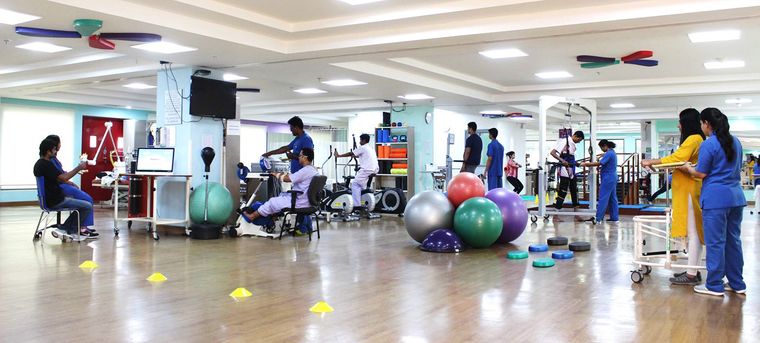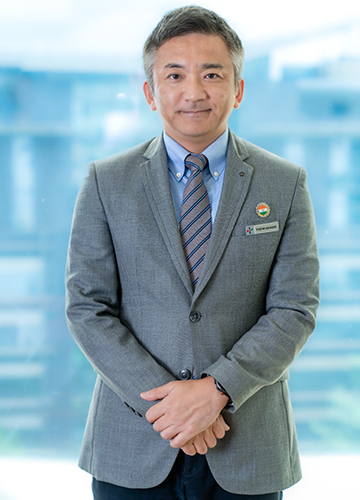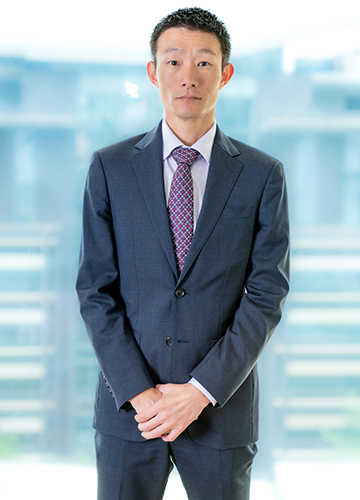On May 11, 2022, Kavitha Shanmugam received a jolt of a phone call. “Your husband is alive and breathing,” said the caller from a North Carolina hospital. It was about her husband Pravinrajraj Radha’s bicycle accident. What made it worse was that she was in India and he in the US.
Kavitha and Pravinraj, who had been in the US for 12 years, got married in 2018. Kavitha was in India to meet her father, who had met with an accident in 2020. She could visit him only in April 2022 because of the pandemic. On the day of Pravinraj’s accident, Kavitha and he had been on call with each other till 3am, India time. Pravinraj had told her that he would be out cycling once he was done with a meeting. And then, close to noon, she got that fateful call from the hospital.
How bad can a bicycle accident be, Kavitha had initially wondered. But a call with the doctors revealed that Pravinraj had suffered a major traumatic brain injury and was in coma, with a score of three―the lowest score that came with an extremely high mortality rate. Kavitha was told that his chances of survival were slim. Pravinraj was in coma for two months; he did not respond to any commands, except for a slight movement in his fingers. He was advised rehabilitation treatment, but that would be a long and slow process. Since Pravinraj was the sole earning member of the family, it became financially unviable to let him remain in care in the US for long. So, he was flown down to India in a critical condition―he could not talk, was fed through a tube and had a tracheostomy done to help him breathe. When he woke up from the coma, he did not recognise Kavitha and would often ask her to call his wife; Kavitha would then leave the room, call him on his phone and talk to him.
That was July 2022. By December though, Pravinraj was on his way to recovery. Within a month of arriving in India, he was able to get up from the bed with some help, take small steps, eat and speak a few words, thanks to extensive neurorehabilitation with physiotherapy, occupational therapy and neuropsychology. Today, Pravinraj can button his own shirt, goes to the gym daily and is looking at resuming work as a software expert in Bengaluru.

“Even though I know he will never be the same person again, it is incredible to see how far he has come,” says Kavitha. “Had it not been for the rehabilitation he underwent at Sakra [World Hospital], I don't think he would be where he is today.”
Venkata, whose 17-year-old son slipped into a coma following a car accident this March, shares the same sentiment. His son had severe internal and external brain injury and partial paralysis of right limbs. The stiffness in his muscles was to such an extent that one could not get him to open his palms even after applying pressure. Today, his son can move his limbs with ease. He underwent movement rehabilitation with the help of a robot and was also put on the hyperbaric oxygen therapy, which treats wounds and other medical conditions by supplying the patient with 100 per cent oxygen inside a special chamber and speeds up the healing process.
“I never thought my son could recover from that fatal accident,” said Venkata. “A brilliant student, he was about to appear for his IIT-JEE when our dreams shattered in those few minutes. I think what made the difference is that my son got passionate and involved care here, which helped him sail through. Every single person at the hospital, from doctors to the attendants, wanted him to recover.”
Both these moving stories of radical turnaround had a common ground―the Sakra Institute of Rehabilitation Sciences, said to be the largest rehab centre in Asia, at the Sakra World Hospital in Bengaluru. The hospital, in its 10th year, is India's first ever 100 per cent FDI (foreign direct investment) hospital, owned and managed by a joint venture between Toyota Tsusho and Secom Hospitals, Japan. The 15,000sqft rehabilitation centre on the third floor of the hospital speaks volumes about the importance given to the rehabilitation process, which is in line with its ideology that every patient should be able to carry out basic functions independently before leaving the hospital. This is also the first rehabilitation centre with a Global Quality Accreditation.

“The Japanese accord a high priority and importance to rehabilitation and that shows in the way they have planned Sakra World Hospital,” says Dr B.M. Maheswarappa, who heads the department. “Secom has a setup for acute rehabilitation in all of its 20 secondary and tertiary care hospitals it runs in Japan. The Japanese give significant importance to a patient's quality of life and so they have dedicated an entire floor towards an advanced multispecialty rehabilitation institute. Here, patients, especially those with traumatic brain injuries and stroke go back home after being trained in dressing, combing, cooking, bathing, toileting and self care. Some patients even learn to independently make tea and coffee before leaving the premises.”
The Japanese way of life and importance to health care is reflected in the smaller aspects at the 307-bedded multispecialty hospital. As you enter, the support staff bows and greets you with a smile. There are no long queues near elevators―one reason could be the short flight of stairs inside the quadrangle. And, the canteen on the ground floor is easily accessible.
“One of the crucial aspects I want to highlight is the courteousness and civility one experiences here,” says Kavitha. “Given the anger issues that my husband was grappling with, everyone, including the person who came to change his diapers, displayed tremendous patience and composure. I think that is really important because if the support staff is grumpy and irritable, then it becomes difficult.”

THE WEEK visited the hospital on a weekday afternoon.
It was crowded but not chaotic. The spacious lobby was free of people huddled together in groups. The Japanese imprint is visible in the ‘May I help you?’ desk and the set of Hina dolls, dressed in imperial clothing of the 9th century, displayed near the entrance. Also, the staff here uses the Japanese honorific ‘-san’ at the end of either the first or last name. And, nobody here will be caught saying, “Give us two minutes.” That, in particular, is a pet peeve of the leadership that runs the hospital. And that is so because it values punctuality.
When THE WEEK arrived 10 minutes early for an interview with managing director Yuichi Nagano and deputy managing director Naoya Matsumi, they walked in within two minutes and were surprised that we were there before time. The duo also did not carry their phones with them during the interview, giving us their full attention. The two of them have been in India for a decade now and having traversed the country, they say, they have learnt a few things “that are so Indian” including “time management, procrastination and the deep urge to give explanations for everything.” The duo ensured that “adherence to time” became a part of the hospital culture.
“Initially, we heard ‘two minutes’ all the time. We decided this culture had to go,” says Matsumi. “There had to be respect for time and discipline. This IST should be accorded some respect, not ridiculed for being Indian Standard Time, which is people will always be late. That is a value we are trying to bring from Japan. Also Indians are very good with giving explanations. But this is a Japanese hospital and so no excuses.”
The duo also noticed some issues with payments. “When we started this hospital, I noticed that somehow payments to the vendors were being delayed,” says Matsumi. “Pharmacy company bills were lying here for days on end and were cleared only upon our reminding. Somebody told me this was the Indian way, but we didn't like it. This is not how an organisation builds trust with its vendors. So behaviours that are otherwise normal and natural in Japan aren't so in India, so our effort is to bring in the best practices in day-to-day functioning.”
Sakra was initially a joint venture between the two Japanese companies and the Kirloskar Group. The Japanese management took over after a fallout with the Kirloskars in 2016. Secom now owns 60 per cent and Toyota Tsusho the rest. “Hospital business is very tough to manage and this hospital was our first hospital in India, outside of Japan,” says Nagano. “In 2019, just before Covid-19, we began making profits for the very first time. But then in 2020, lockdowns happened and the number of patients decreased drastically. So we became negative again. But after 2021, we came back to positive again and now I can say that we are very much a profitable hospital.” So much so, he adds, that their investors have decided to fund a second hospital with 450 beds, which will come up by January 2027 in the city. At the new hospital, there are plans to set up a radiation facility for cancer patients, which the current hospital lacks. “The capacity of [the present] hospital is almost reaching a limitation in terms of occupancy and the number of surgeries,” says Nagano. “So we need to expand our functions so as to increase the number of patients.”
Patients THE WEEK spoke to cited several reasons for choosing Sakra. “When I compared the cost of the hyperbaric oxygen therapy in certain other hospitals in Bengaluru, it was much less at Sakra,” says Venkata. “The cleanliness and hygiene and civility among the staff played a huge role, too.”
The quick turnaround time in the billing and discharge was what worked for Sandhya Sri Koka, who was admitted thrice at the hospital for her asthmatic attacks; her husband, too, was admitted twice. “It did not take more than one to two hours for us to get through to the admissions or the discharge process,” she says. “There are no delays in either the processes nor in seeking an appointment with the doctor or summoning one while one is in the hospital.”
This, explains Matsumi, “captures the Shokunin culture” which is deeply ingrained in the Japanese society as its commitment to mastery, craftsmanship and profound connection to one’s work. “We came down from five hours initially to two hours of post-discharge paperwork,” he says. “Also, the billing process at Sakra hospital has been streamlined to less than 10 minutes.”
Nagano attributes the Sakra culture to the Japanese philosophy of Kaizen―continuous improvement in everyday operations. “It took us more than five years to establish it,” he says. At present, all employees at Sakra are Indian, except for Nagano and Matsumi.
Dr Raji Verghese, associate consultant in the paediatric department, appreciates the organised way of working at the hospital. “We have all the sub-specialties in the area of paediatrics, including rheumatology, endocrinology, gastroenterology, mother and child section, and we have even operated on pre-term babies,” says Verghese, who has been with Sakra for nine years now. “But we lack a paediatric cardiology section.”
Speaking about the initial hiccups in running the hospital, Nagano says, “When we were opening this hospital, Indian partners at that time didn't think twice; they were impatient and pushy. ‘Believe in me and my word, the hospital will be successful,’ they said. But Japan doesn't work like that. We see the market size, population, payment capability, income level segments and specialties―we analyse everything. But Indians think that we are delaying the process and they say that by the time you finish all this analysis, the market will already have moved on to the competitor. I think we are more cautious than Indians.”
This difference in style of working and approaching things could be why the Kirloskars left the venture. In 2015, Geetanjali Kirloskar, who was the hospital’s chairperson then, had written in an article about how the Japanese build business by building relationships. “The prerequisite is trust, which takes time. Thereafter they will stand by you regardless,” she wrote. “They reach meetings early, understanding traffic conditions and other possible delays and account for them. If we reach late, they will receive you politely, smile and bow. The Japanese arrive at consensus through closed-door interactions within their team. This synthesis of differing views makes Japanese style the antithesis of the agile management style of Silicon Valley, to which we subscribe.” She also added that while the Japanese were always courteous, never contradicting each other or their boss in public, Indians tend to be argumentative and aggressive.
Also, health care in Japan is mainly covered by government insurance. Patients there see hospitals as offering public service. Hence, their expectations remain low. However, in India, said Nagano, patients look for value for money in everything. “At times, and I am very sorry to say this, Indian patients are very demanding,” he says. “It is easier to please a Japanese patient more than it is to impress an Indian patient.”
Both Nagano and Matsumi talk about the “perennial problem related to the attrition of nurses in the hospital”. “It is a headache. It is more than 60 per cent,” says Matsumi. “It is very difficult for us to maintain the quality of nurses in India and one reason for it is that here doctors are placed on a pedestal but the social status of nurses is abysmally low in comparison with Japan. We place high value on the education of nurses and accordingly decided to take Indian nurses to Japan to raise their social status. There is a training and simulation centre for nurses at Sakra now.”
But why would the Japanese establish a state-of-the-art hospital in India? “India is a potential market. In the area of health care, we see more liberty and opportunities here,” says Matsumi. “In Japan, we have strict rules put in place by the government―there are limitations in terms of pricing…. It is an overall tightly regulated country. But in India, there is free competition. If we are doing good work and offering good services, patients will come.”




